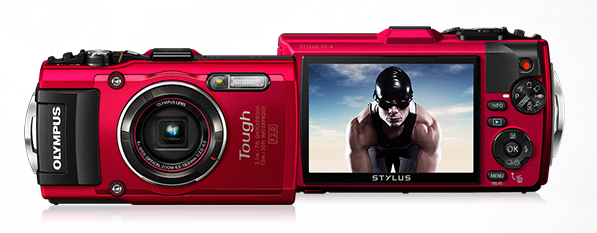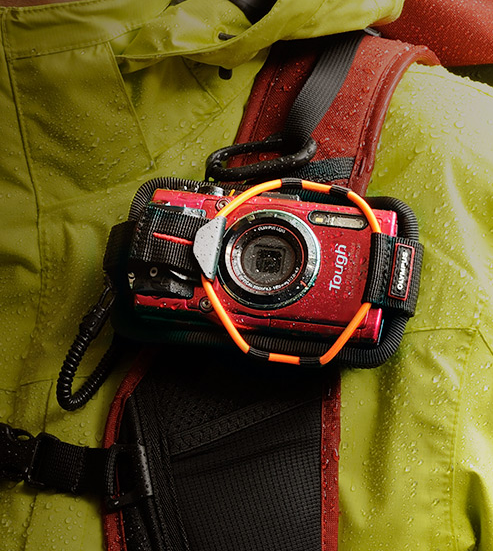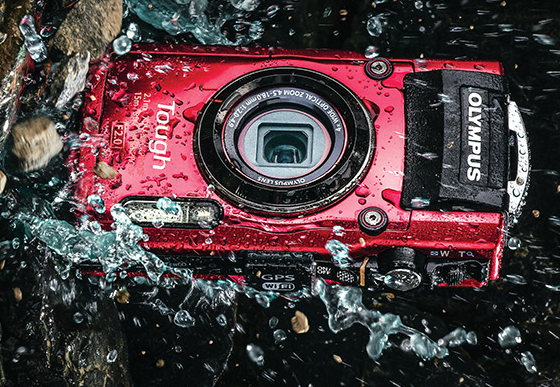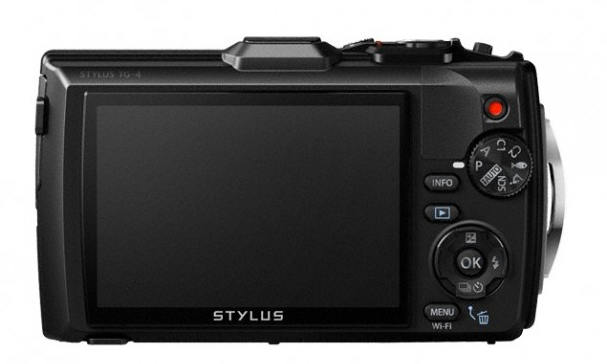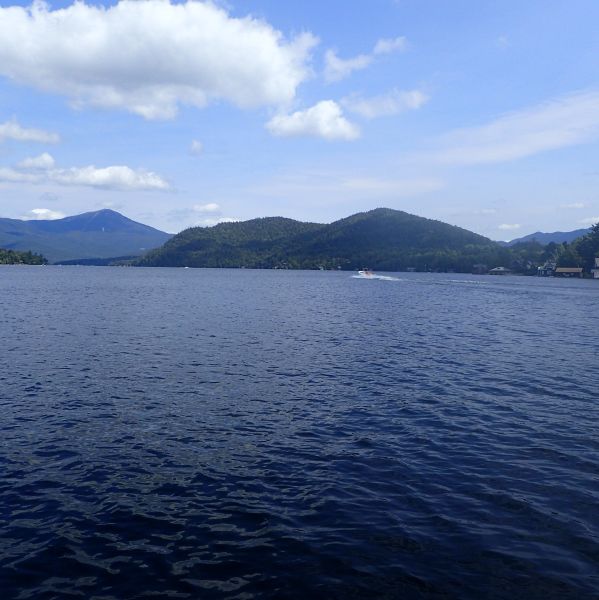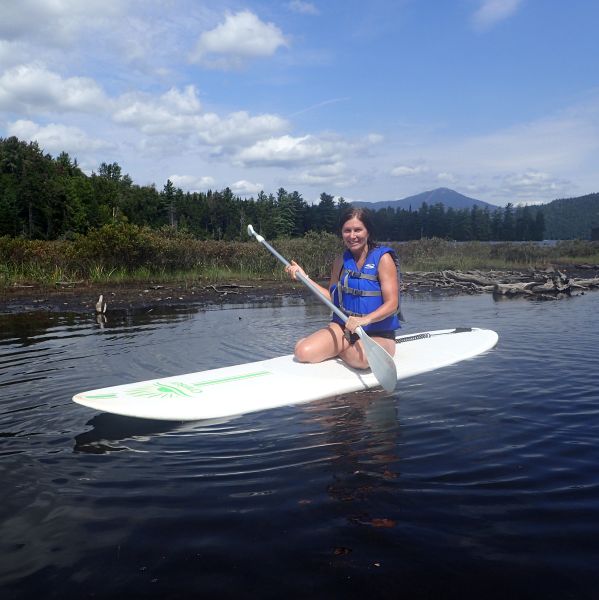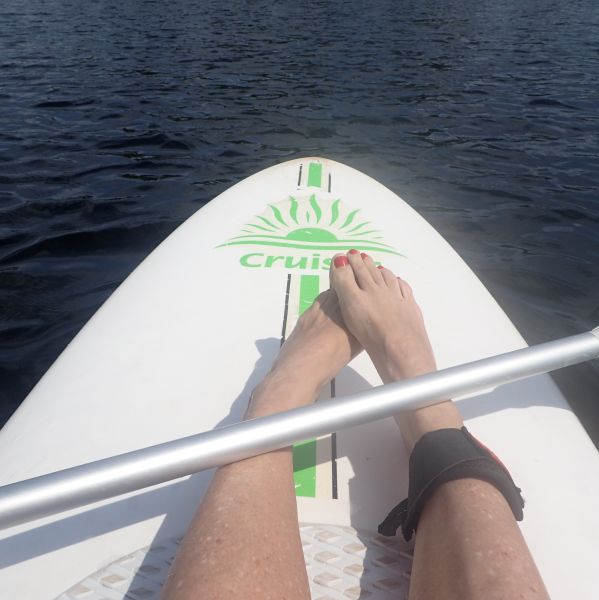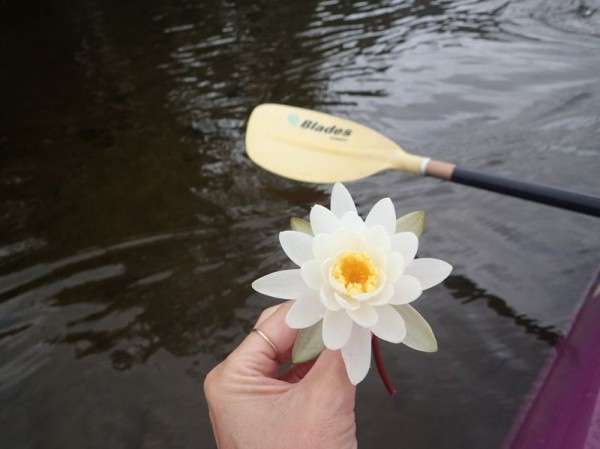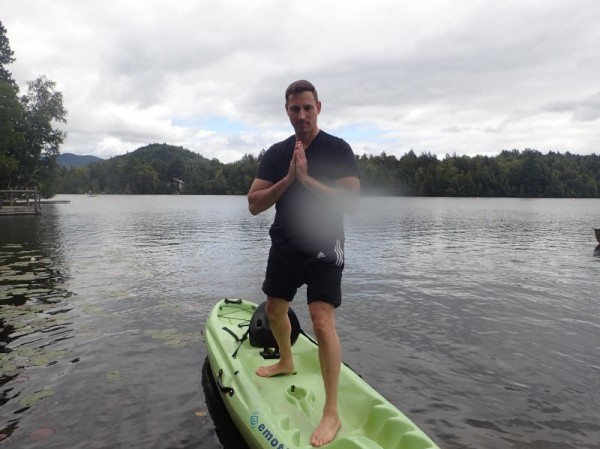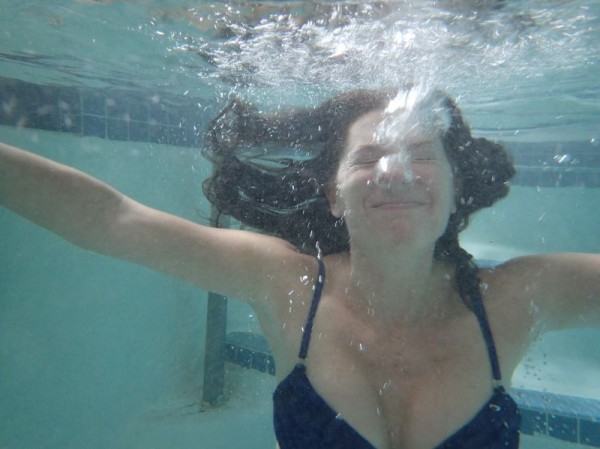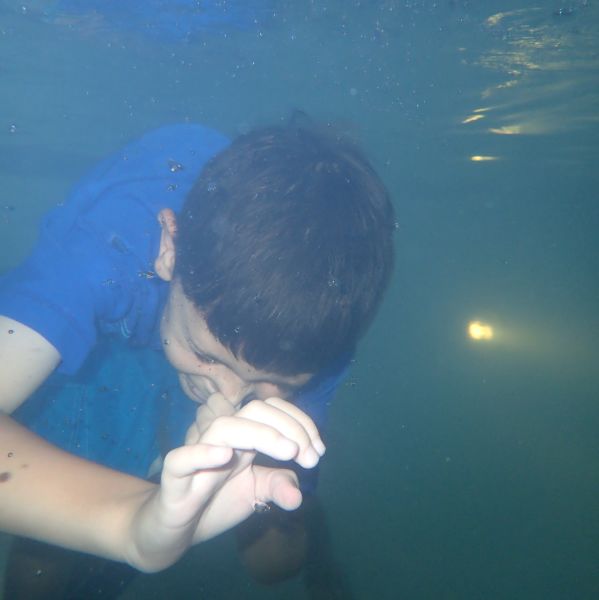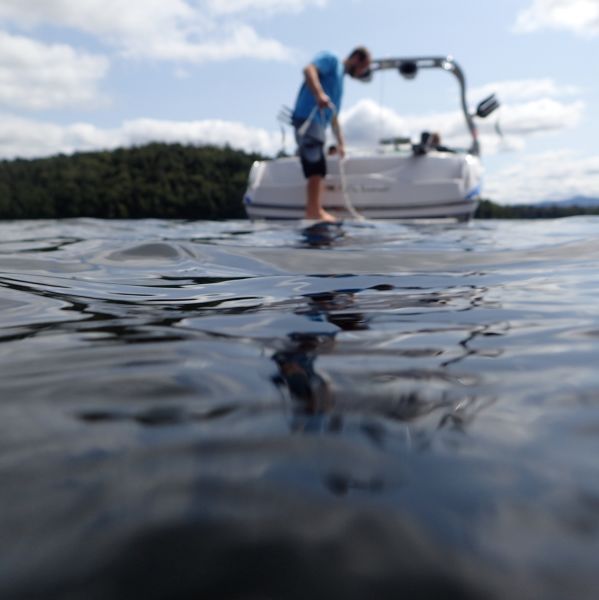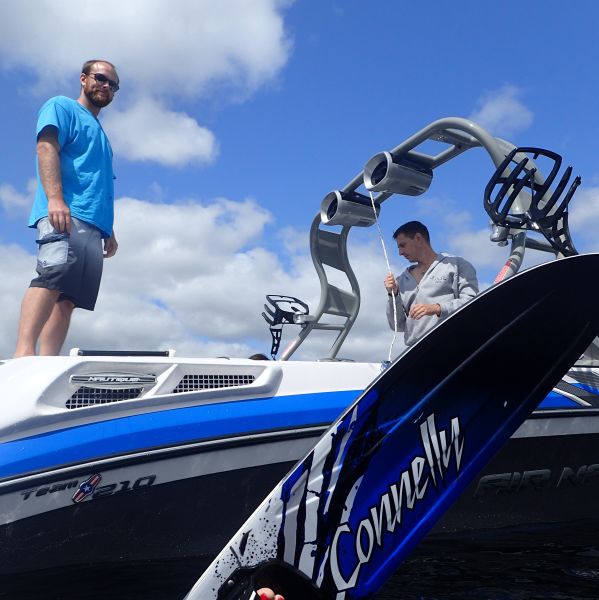Olympus has a fairly new tough camera out called the TG-4, which they tout is rugged enough to go anywhere. Loaded in the camera are sophisticated features like RAW capture, nighttime Live Composite, and the super-bright F2.0 wide-angle zoom lens which is great for those lower light situations, which we all experience when on the road, whether it truly is night or we just have significant cloud cover.
Whether you snorkel or surf, ride or ski, bike or hike, or love to shoot outdoors, this fabulous little camera is a great option for adventure travelers. Let’s take a look at its other great features of the Olympus TG-4 for the adventure warrior!
Navigation: e.Compass
A nice built in feature is a multi-function e.Compass, which eases the process of finding, shooting and sharing your photos after the fact. Information includes latitude and longitude, atmospheric and water pressure, altitude and water depth, and date and time.
Durable & Rugged: Waterproof, Crushproof, Shockproof, Freezeproof & Dustproof
This compact but hardy camera is waterproof to depths of 50 feet, its rugged inner and outer chassis construction protects the lens assembly from force. In other words, it’s actually crushproof to 220 lbs and the impact is shockproof to around 7 feet. It is also what they call “dustproof” which is great for when you’re out hiking. If you’re traveling in colder temperatures, it’s also freezeproof to 14°F/-10°C. These are all awesome features for the adventure travelers among you — we love what we’ve been able to do with this small camera in hand over the summer when traveling on America’s East Coast.
Sensors, Processor & Lens
There’s a 16 MP BSI CMOS Sensor, F2.0 high speed lens for low light situations. For the more serious photographer, it touts a TruePic VII Image Processor with a 16 Megapixel – BSI CMOS 1/2.3″ Image Sensor and you can shoot in RAW if you have ample storage cards. For action shots, the continuous shooting feature is nice (5fps / 100 images (16M); 15fps / 100 images (3M); 60fps / 100 images (3M) and for those wanting to capture wildlife or sports, the built in zoom is a godsend for those not wanting to carry their heavier SLR’s with them in certain situations.
I live with my Canon 7D around my arm, but let’s be honest, as much as I’m in love with this camera, it’s sometimes too heavy, big or not practical to take into a certain situation, whether it be a concert, on a boat, or when skiing down a mountain. Even though it’s small, it does have a 4x Optical Zoom + 2x Super Resolution Zoom + 4x Digital Zoom so you don’t always have to be on top of your subject. The Lens Aperature Range is Wide f2.0, f2.8, f8.0, Tele is f4.9, f6.3, f18.0, the Focal Length is 4.5 – 18.0mm (35mm equivalent: 25 – 100mm), the Focus Range is Wide/Tele: 3.9in/10cm to infinity and there’s a built in AF Illuminator.
Shooting Modes
For the techies among us who want a little more data, there’s a ton of shooting modes to choose from as well:
- Mode Dial: Intelligent Auto (iAUTO), Program Auto (P), Aperture Priority (A), Scene Modes (SCN), Microscope, Underwater, Custom Mode 1 (C1), Custom Mode 2 (C2)
- Microscope Modes: Microscope, Focus Stacking, Focus Bracketing, Microscope Control
- Scene Modes: Portrait, e-Portrait, Landscape, Interval Shooting, Live Composite, Hand-Held Starlight, Night Scene, Night + Portrait, Sport, Indoor, Self Portrait, Sunset, Fireworks, Cuisine, Documents, Beach & Snow, Snow, Panorama, Backlight HDR
- Picture Modes: Vivid, Natural, Muted
- Panorama: Allows you to intuitively pan the camera across the scene.
Art Filters & Self Timer Mode
The camera offers cool art filters, such as Pop Art, Soft Focus, Pale & Light Color, Grainy Film, Pin Hole, Diorama, Dramatic Tone, Fish Eye, Sparkle, Reflection, and something they refer to as Fragmented. For solo travelers or couples wanting to capture something a little higher quality than your standard selfies, the Self-Timer mode is a great feature and frankly, a must for any camera in our opinion. This model has 2 sec, 12 sec, Custom Self-Timer (1-30 sec start timer, 1-10 pictures, 1-3 sec interval), so plenty of choices depending on the environment you happen to be in. I couldn’t really figure out the art filters so probably need more time with the camera to test them out in a real environment.
The camera pictured at the top is a fun red and the one we wanted to review, but apparently they didn’t have any in stock at the time (we are bummed given our LOVE of colors in products as regular readers know….it’s one of our “things”). And so, the camera we put to the test is the very same TG-4 in black and was part of a fun campaign they called #SummerofTough which we participated in! The camera comes in both red and black, pictured below.
Video
While we don’t do a ton of video, we do capture stories via video from time-to-time. I have a trusty old mini-Kodak I use for some of these shots, and other times, I shoot video on a Canon Rebel or my reliable Canon 7D. It’s nice to have the Olympus TG-4 as a back-up, particularly with its rugged features, so we can capture video in rougher weather conditions.
The video mode on this Olympus are 1080p, 720p, VGA, Time-Lapse Movie (720p), High-Speed 120fps (640×480), High-Speed 240fps (320×240) and for video file format is MOV/H.264, AVI/Motion JPEG (High-Speed Movie, Time Lapse Movie). Interval Shooting images may be automatically compiled into a movie lasting up to 10 seconds (movie is 720p at 10 fps).
Built in GPS and Wifi
The enhanced GPS feature allows for accurate positioning within 10 seconds via multiple satellite systems; location and landmark information may be viewed and geo-tagged to photos. How cool is that?
The built in Wifi Feature allows you to easily share files with IOS and Android mobile devices. You can geotag photos with GPS location, remotely compose a shot, adjust camera settings and trip the shutter, all from an IOS or Android mobile device and apply custom signatures, art filters and stamps to your photos.
Battery Life & Other Useful Specs
The Olympus TG-4 is 4.4″ in width, 2.6″ in height, 1.2″ in depth and weighs in at 8.7 ounces. It obviously comes with a USB cable to connect, an AC Adapter, a Quick Start Guide and a CD-ROM with instruction manual and Olympus Viewer 3 software.
It comes with a Lithium-Ion rechargeable battery (LI-92B) and the battery life is aimed to take up to 380 shots or 120 minutes of continuous video shooting before having to recharge. OS support includes Windows XP SP3, Windows Visa SP2, Windows 7 SPI, Windows 8, Windows 8.1 and Mac OS. A couple of things to note on the battery:
- Be sure that your camera is off when you’re not shooting. If it’s on in the background, even if you’re not using it, your battery will drain quickly.
- The other thing to note is the battery slot itself. We couldn’t get the camera to work initially and as moronic as this sounds, we had the battery in backwards. With all other cameras I’ve used over the years, the door won’t shut properly if the battery is in the wrong way, one sure way to make sure you have it in correctly. Truth be told, we made this mistake three times before we double checked ourselves each time to ensure we had it in correctly and once was while I was in the middle of a lake, putting a slalom ski on in August.
This close-up of Jake below shows a bit more clarity for shots within close range.
Below, you’ll notice that some steam built up in the middle of the lens which we didn’t realize until 20 photos into our day. It wasn’t that visible on the camera itself, so its important to view your shots regularly so you can detect any lens interference early on.
In the water and under the water, I couldn’t seem to grasp the focus but that is largely because we didn’t have enough time to test and re-test with it under the water as we were on boats more than we were swimming in pools and lakes. We also were not snorkeling in the Great Barrier Reef or seeing vibrantly colored fish below the water’s surface, so bear that in mind when you look at the quality of the colors.
When I’m snorkeling in Tahiti or Aruba then I’ll likely spend more time getting the underwater focus and clarity down, but my biggest win out of this camera were the shots I was able to capture while hanging out low on a paddle board which was nearly every day of my trip to Lake Placid in late August.
I also brought it in the water with me while we went tubing and waterskiing. It’s hard to get great shots from the other side (inside the water) unless you have a durable waterproof camera in tow.
Having the Olympus TG-4 was a godsend on the Adirondack trip since we were able to capture precious moments of the kids on the tubes (above), while swimming, on boats and while skiing. It wrapped around my wrist easily and if I wanted to take extra precaution, there are plenty of cases I could have used with even more secure handles. Have a look at some of the shots I captured while I was waiting for the driver to take me on another ski run. Two thumbs up! I’m eager to take it with me to South America later this year.

Renee Blodgett is the founder of We Blog the World. The site combines the magic of an online culture and travel magazine with a global blog network and has contributors from every continent in the world. Having lived in 10 countries and explored nearly 80, she is an avid traveler, and a lover, observer and participant in cultural diversity.
She is also the CEO and founder of Magic Sauce Media, a new media services consultancy focused on viral marketing, social media, branding, events and PR. For over 20 years, she has helped companies from 12 countries get traction in the market. Known for her global and organic approach to product and corporate launches, Renee practices what she pitches and as an active user of social media, she helps clients navigate digital waters from around the world. Renee has been blogging for over 16 years and regularly writes on her personal blog Down the Avenue, Huffington Post, BlogHer, We Blog the World and other sites. She was ranked #12 Social Media Influencer by Forbes Magazine and is listed as a new media influencer and game changer on various sites and books on the new media revolution. In 2013, she was listed as the 6th most influential woman in social media by Forbes Magazine on a Top 20 List.
Her passion for art, storytelling and photography led to the launch of Magic Sauce Photography, which is a visual extension of her writing, the result of which has led to producing six photo books: Galapagos Islands, London, South Africa, Rome, Urbanization and Ecuador.
Renee is also the co-founder of Traveling Geeks, an initiative that brings entrepreneurs, thought leaders, bloggers, creators, curators and influencers to other countries to share and learn from peers, governments, corporations, and the general public in order to educate, share, evaluate, and promote innovative technologies.

